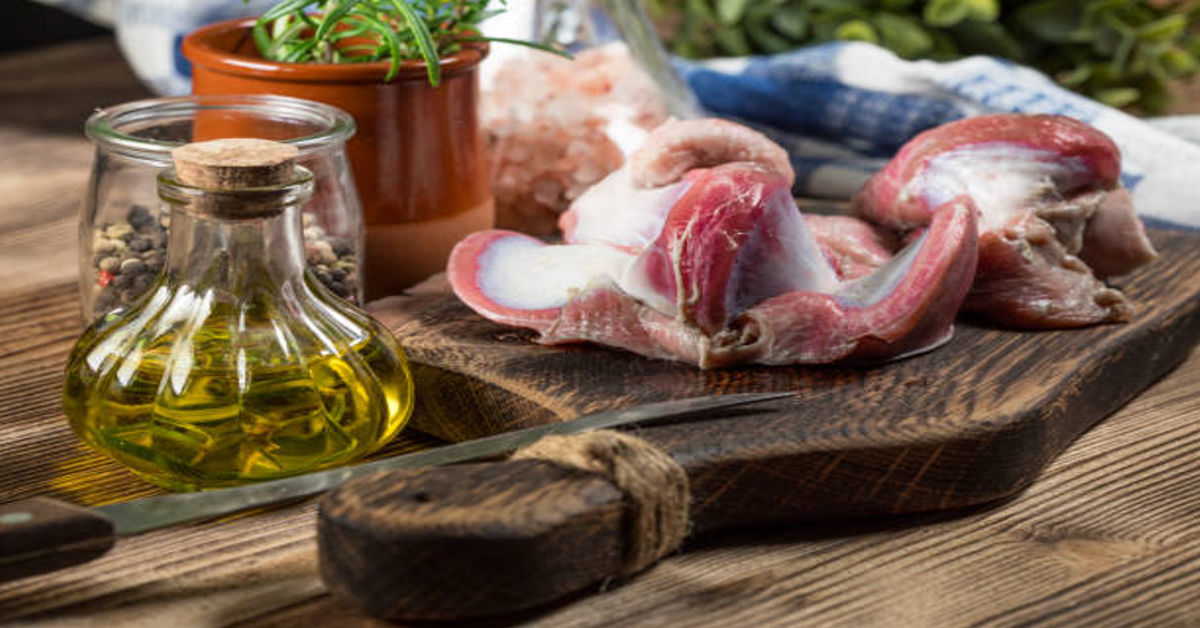In a world increasingly focused on health, sustainability, and returning to traditional nutrition, certain forgotten foods have begun to regain attention. Among these, beef tallow stands out as one of the most fascinating and misunderstood ingredients. Once a staple in every household kitchen and widely used in everything from frying to skincare, beef tallow was unfairly pushed aside in the mid-20th century during the rise of vegetable oils and low-fat trends. However, as modern nutrition revisits ancestral wisdom and science re-examines natural fats, beef tallow is reemerging as a powerful, versatile, and sustainable fat source.
This article explores beef tallow in-depth — what it is, its production, nutritional composition, culinary uses, skincare benefits, sustainability value, and how it can fit into a balanced, health-conscious lifestyle.
1. What Is Beef Tallow?
Beef tallow is a rendered form of beef fat, specifically derived from the fatty tissues of cattle. When raw beef fat (often called suet when from around the kidneys) is heated slowly, impurities, moisture, and solid particles are separated, leaving behind a pure, stable fat known as tallow.
This pure tallow has a smooth texture, pale cream color, and a subtle savory aroma. It solidifies at room temperature but melts easily when heated. Because it’s primarily composed of saturated and monounsaturated fats, tallow is remarkably heat-stable — making it excellent for frying, baking, and long-term storage without going rancid quickly.
In historical societies, tallow was not just a cooking ingredient; it was used for lighting (candles), soap making, leather conditioning, and skincare. Its versatility made it an essential product long before industrial oils became common.
2. Historical Background and Traditional Use
Beef tallow has deep historical roots across cultures. Before the industrial age, animal fats were central to human diets and lifestyles. People rendered fat from animals not only to avoid waste but because it provided dense nutrition and multifunctional benefits.
- In Europe, tallow was the foundation for traditional British pies and fried foods. It was also used in soap and candle making.
- In the Americas, pioneers and homesteaders used beef tallow to preserve food, cook, and create waterproof materials.
- In Asia, beef and lamb tallow played roles in deep-fried dishes and as a heat source in cold climates.
It wasn’t until the early 1900s, with the industrial rise of vegetable shortening and seed oils, that tallow began to fade from modern kitchens. Ironically, what was once a naturally derived and nutrient-rich fat was replaced by highly processed alternatives marketed as “healthier.” Today, as consumers rediscover traditional fats, tallow is experiencing a major revival.
3. The Rendering Process: From Fat to Tallow
Rendering is the process that transforms raw beef fat into pure, usable tallow. It is a simple yet delicate procedure that determines the quality, purity, and aroma of the final product.
| Rendering Step | Description |
|---|---|
| 1. Preparation | Raw beef fat (suet or trimmings) is cleaned to remove any meat or blood. It is then chopped into small pieces for even heating. |
| 2. Slow Heating | The fat is melted slowly over low heat, allowing it to liquefy without burning. This separates pure fat from water and connective tissue. |
| 3. Straining | Once fully melted, the liquid fat is strained through cheesecloth or fine mesh to remove solids (called cracklings). |
| 4. Cooling | The clear liquid is poured into jars and allowed to cool and solidify into smooth, creamy tallow. |
| 5. Storage | When kept in a sealed container, tallow can last months at room temperature and over a year refrigerated. |
The best tallow is lightly golden, odorless, and free of impurities. High-quality rendering produces a neutral fat suitable for both cooking and cosmetic use.
4. Nutritional Composition of Beef Tallow
Beef tallow is a rich source of energy and essential fatty acids. Despite being high in fat, it offers balanced types of fatty acids that play vital roles in human health. Below is a breakdown of its nutritional composition (per 1 tablespoon ≈ 13g):
| Nutrient | Approximate Amount | Function |
|---|---|---|
| Calories | 115 kcal | Concentrated energy source |
| Total Fat | 13g | Supports metabolism and hormone balance |
| Saturated Fat | 6g | Provides structure to cells; stable for cooking |
| Monounsaturated Fat (Oleic Acid) | 5g | Supports heart health and reduces inflammation |
| Polyunsaturated Fat | <1g | Small amounts of essential omega fats |
| Cholesterol | 13 mg | Aids hormone production |
| Vitamin E | Trace | Natural antioxidant |
| Vitamin D (in grass-fed tallow) | Small amounts | Supports bone and immune health |
Key Nutritional Facts
- Grass-fed beef tallow contains Conjugated Linoleic Acid (CLA) — linked to improved metabolism and anti-inflammatory benefits.
- It is also a natural source of fat-soluble vitamins (A, D, E, and K) when rendered from grass-fed cattle.
- Unlike seed oils, tallow contains no trans fats when rendered naturally.
5. Health Benefits of Beef Tallow
Beef tallow, when consumed responsibly and sourced from high-quality, grass-fed beef, can offer multiple health benefits. It supports the body’s natural systems in ways that processed oils cannot.
A. Supports Hormone Balance
Fat is essential for hormone production, particularly sex hormones and stress-regulating compounds. The cholesterol and saturated fat in tallow provide the raw materials for these vital hormones.
B. Promotes Heart Health (When Balanced)
Contrary to outdated myths, moderate consumption of natural saturated fats like tallow does not necessarily harm cardiovascular health. Its monounsaturated fats (similar to olive oil) help maintain healthy lipid balance and reduce inflammation.
C. Improves Nutrient Absorption
Fat-soluble vitamins (A, D, E, K) require dietary fat for absorption. Cooking vegetables or lean meats with tallow increases nutrient bioavailability.
D. Enhances Skin and Joint Health
Tallow is structurally similar to human sebum (the natural oil in our skin). When consumed or applied topically, it supports skin hydration, elasticity, and wound healing. Its fatty acids also aid joint lubrication.
E. Provides Long-Lasting Energy
Unlike carbohydrates, fats release energy slowly and steadily. Tallow can be beneficial for those on low-carb or ketogenic diets, supporting metabolic stability throughout the day.
6. Culinary Uses of Beef Tallow
Beef tallow shines as a cooking fat due to its high smoke point (around 400°F / 205°C) and rich, neutral flavor. It is ideal for frying, sautéing, roasting, and baking.
| Cooking Method | How Tallow Performs |
|---|---|
| Deep Frying | Produces crisp textures without oxidizing like vegetable oils. |
| Sautéing & Pan-Frying | Adds flavor depth and resists burning. |
| Baking | Enhances flakiness in pastries and biscuits. |
| Roasting Vegetables or Meat | Locks in moisture and amplifies aroma. |
| Seasoning Cast Iron | Creates a durable, non-stick surface. |
Example Dishes:
- Tallow-fried potatoes (the original style used by fast-food chains decades ago)
- Homemade pie crusts using tallow instead of shortening
- Searing steaks or vegetables for a golden crust
- Roasted root vegetables coated with melted tallow
Tallow also enhances the “umami” flavor — that subtle savory richness that makes dishes taste deeply satisfying.
7. Beef Tallow in Skincare and Cosmetics
Interestingly, beef tallow is not just food; it is an exceptional natural skincare ingredient. The fatty acids found in tallow closely resemble those in human skin lipids, making it easily absorbed and highly nourishing.
Topical Benefits of Tallow:
- Deep Moisturization – Tallow forms a breathable layer that locks in moisture without clogging pores.
- Anti-Inflammatory Effects – CLA and palmitoleic acid soothe irritation and redness.
- Rich in Vitamins A, D, E, K – These support skin renewal and antioxidant protection.
- Healing Support – Tallow balm aids minor wounds, dryness, and eczema.
Common Tallow-Based Products:
| Product Type | Function |
|---|---|
| Tallow Balm | Natural moisturizer for dry or sensitive skin. |
| Tallow Soap | Gentle cleanser that preserves skin oils. |
| Tallow Lip Balm | Repairs and hydrates cracked lips. |
| Tallow Lotion Bars | Solid moisturizers for rough areas like elbows and knees. |
Because it’s entirely natural and free of synthetic chemicals, tallow is suitable for people seeking clean, minimal-ingredient skincare.
8. Environmental and Sustainability Aspects
Using beef tallow aligns with the principles of zero-waste and sustainable consumption. Rendering fat from animals already processed for meat ensures that every part of the animal is used efficiently.
Sustainability Benefits:
- Reduces Waste: Converts by-products into valuable resources.
- Biodegradable: Unlike petroleum-based products, tallow breaks down naturally.
- Renewable: Derived from regenerative livestock farming.
- Local Production: Often produced regionally, reducing carbon transport costs.
Grass-fed beef tallow, in particular, supports sustainable agriculture because it utilizes animals raised on pastures, contributing to soil health and carbon sequestration.
9. Comparison Between Beef Tallow and Vegetable Oils
| Feature | Beef Tallow | Vegetable Oils (e.g., Canola, Soybean) |
|---|---|---|
| Source | Animal fat | Plant seeds |
| Processing | Natural rendering | Industrial extraction and refining |
| Smoke Point | ~400°F (205°C) | 350–400°F (depending on oil) |
| Stability | Highly stable | Prone to oxidation |
| Trans Fats | None (if natural) | May form during refining |
| Flavor | Savory and rich | Neutral or chemical |
| Shelf Life | Long-lasting | Can go rancid quickly |
| Nutrients | Fat-soluble vitamins | Often stripped during processing |
Beef tallow, when used in moderation, provides more stability and fewer harmful compounds than many refined oils. This makes it ideal for home cooking where heat consistency matters.
10. Common Misconceptions About Tallow
Despite its resurgence, tallow still faces outdated misconceptions.
Myth 1: Tallow is Unhealthy Because It’s Saturated Fat
Scientific understanding of fats has evolved. Natural saturated fats, like those in tallow, do not automatically raise heart disease risk when consumed as part of a balanced diet.
Myth 2: It Tastes “Beefy” or Heavy
Properly rendered tallow from clean fat is mild, not greasy or overpowering. It imparts a subtle depth rather than an intense flavor.
Myth 3: It’s Outdated or Unsafe
On the contrary, tallow is one of the oldest, most natural fats known to humankind, and when sourced from healthy cattle, it’s clean, stable, and nutritionally valuable.
11. How to Store and Handle Beef Tallow
Proper storage preserves the quality and freshness of tallow.
| Storage Condition | Expected Shelf Life | Notes |
|---|---|---|
| Room Temperature (sealed jar) | 3–6 months | Keep away from light and heat. |
| Refrigerator | Up to 1 year | Ideal for long-term use. |
| Freezer | 1–2 years | Freeze in small portions for convenience. |
Handling Tips:
- Always use clean utensils to avoid contamination.
- Reuse tallow from frying several times, but strain it between uses.
- Discard tallow if it develops off smells or discoloration.
12. Homemade Rendering of Beef Tallow
Rendering your own tallow is easy and rewarding. Here’s a simple home method:
Ingredients:
- Raw beef fat (preferably suet from grass-fed cattle)
- A heavy pot or slow cooker
- Fine strainer or cheesecloth
Steps:
- Chop fat into small cubes.
- Heat slowly on low flame until melted.
- Stir occasionally to prevent sticking.
- Strain through cheesecloth.
- Pour the clear fat into jars and let cool.
You’ll get a beautiful, creamy tallow that’s versatile for cooking, skincare, or candle-making.
13. The Role of Beef Tallow in Modern Nutrition
Modern nutrition science increasingly recognizes the importance of natural fats for brain function, hormone production, and cell health. Unlike processed oils, beef tallow contains stable fats that resist oxidation — a major cause of inflammation in the body.
Tallow-based diets, particularly in ancestral or ketogenic nutrition, are being revisited for their role in satiety and metabolic balance. They support steady energy without spikes in blood sugar, making them useful for people following low-carb, paleo, or carnivore-style diets.
14. Industrial and Non-Food Uses of Tallow
Besides its culinary and cosmetic applications, tallow has a wide range of industrial uses.
| Industry | Application |
|---|---|
| Soap & Candle Making | Produces firm, long-lasting soaps and slow-burning candles. |
| Lubrication | Used in machinery and leather conditioning. |
| Biodiesel Production | Converted into renewable energy source. |
| Metalworking | Acts as a cooling lubricant for cutting and shaping. |
These applications make tallow an eco-friendly, multi-purpose material, highlighting its relevance beyond the kitchen.
15. Ethical Sourcing and Grass-Fed Quality
The quality of beef tallow depends heavily on the source. Tallow from grass-fed, pasture-raised cattle is nutritionally superior — containing higher omega-3 fatty acids, CLA, and vitamins. Ethical sourcing ensures that the fat used is not from factory-farmed animals treated with hormones or antibiotics.
Consumers seeking health and sustainability should look for labels such as:
- “Grass-Fed and Finished”
- “Pasture-Raised”
- “Non-GMO Feed”
- “Rendered from USDA-Inspected Beef”
Supporting ethical farms ensures both nutritional integrity and humane treatment of animals.
16. Conclusion: Returning to Nature’s Original Fat
Beef tallow represents the wisdom of tradition combined with modern understanding of nutrition and sustainability. It embodies the idea that natural, unprocessed foods — when respected and used responsibly — offer more benefits than industrial replacements.
From its role in ancient kitchens to its reappearance in contemporary diets, tallow has proven timeless. It nourishes, protects, and sustains — both body and environment. Whether you cook with it, moisturize your skin with it, or use it to reduce waste, beef tallow is more than fat — it’s a reminder that simplicity and natural balance never go out of style.
Frequently Asked Questions (FAQs)
1. What exactly is beef tallow made from?
Beef tallow is made from rendered beef fat, typically from around the kidneys and loins, known as suet. The fat is slowly melted and purified to create a clean, stable cooking fat.
2. Is beef tallow healthy to eat?
Yes, when consumed in moderation and sourced from grass-fed cattle, beef tallow provides healthy fats, fat-soluble vitamins, and energy while supporting hormone and brain health.
3. Can I use beef tallow for skincare?
Absolutely. Tallow is deeply moisturizing and rich in natural vitamins. It mimics human sebum, making it excellent for dry or sensitive skin.
4. How long does beef tallow last?
Properly stored, beef tallow can last for months at room temperature and over a year when refrigerated or frozen.
5. How is tallow different from lard?
Tallow comes from beef fat, while lard comes from pork. Both are animal fats, but tallow is firmer at room temperature and has a higher smoke point, making it better for frying.









